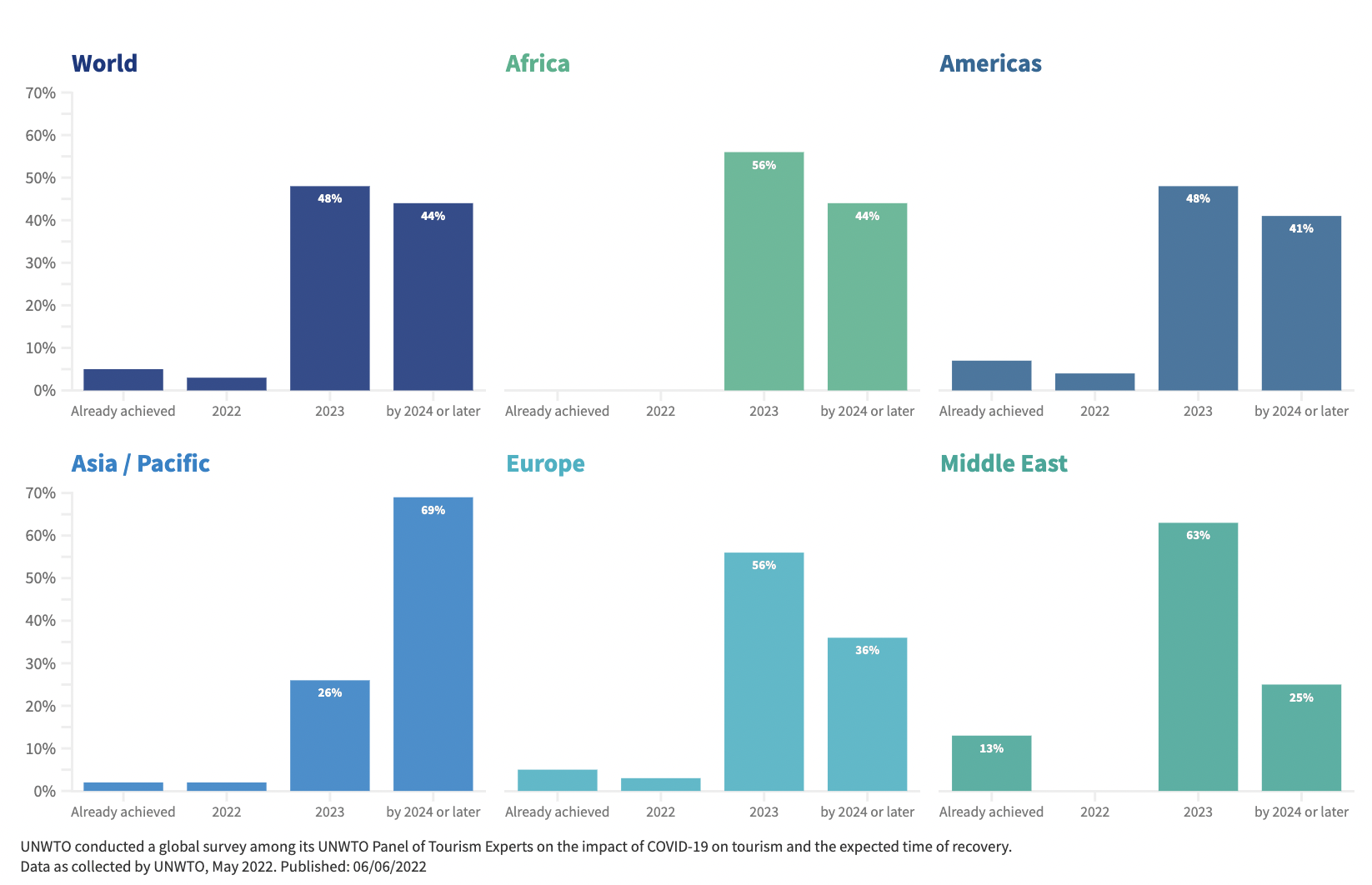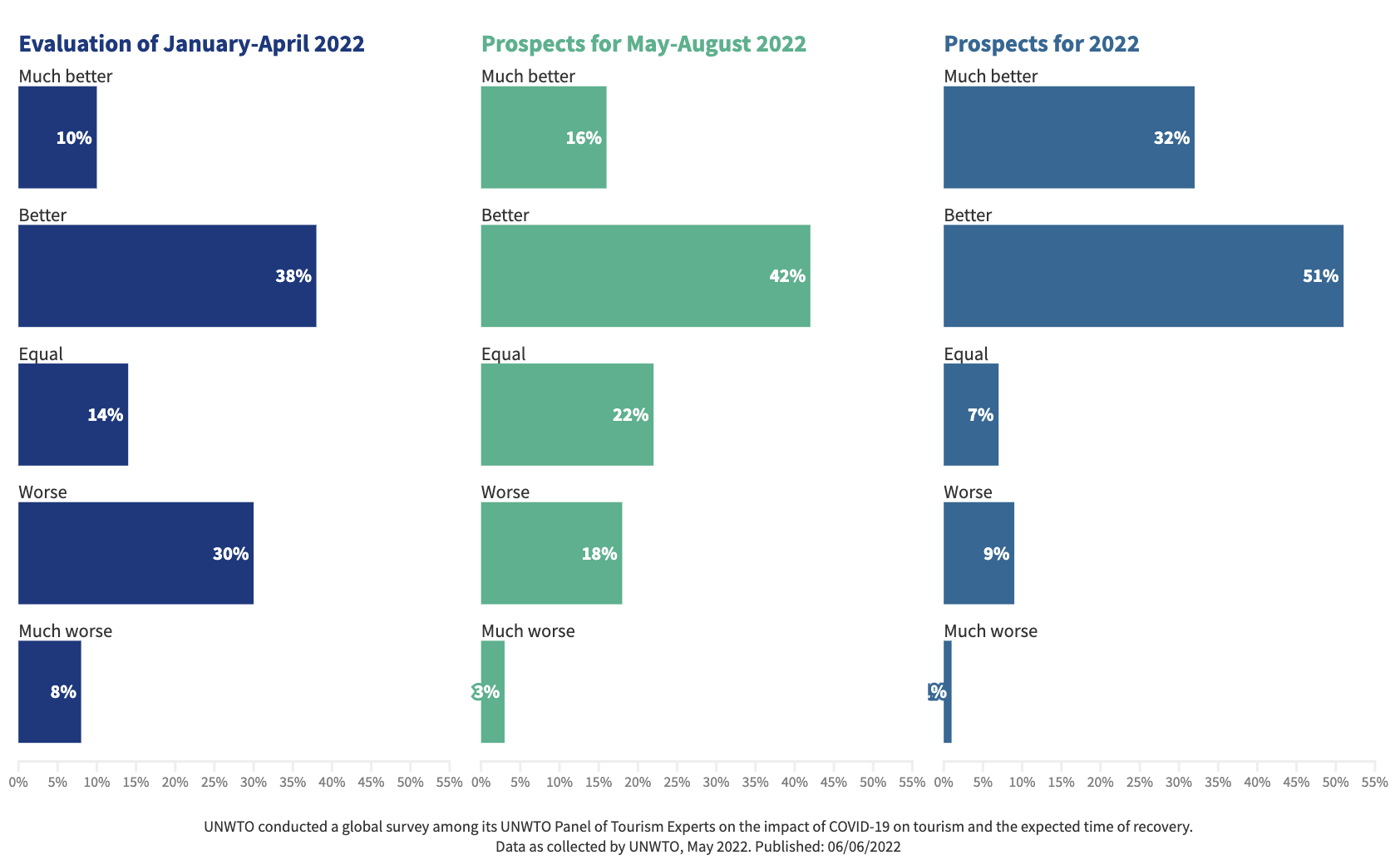 INTERNATIONAL. Worldwide tourism continues to recover at a strong pace, according to the newly released UNWTO World Tourism Barometer.
INTERNATIONAL. Worldwide tourism continues to recover at a strong pace, according to the newly released UNWTO World Tourism Barometer.
Globally, destinations welcomed almost three times as many international arrivals in the first quarter of 2022 as in the same period of 2021, with Europe leading the sector’s rebound.
According to the UNWTO World Tourism Barometer, international tourism saw a +182% year-on-year increase in January-March 2022, with destinations worldwide welcoming an estimated 117 million international arrivals compared to just 41 million in Q1 2021.
Of the extra 76 million international arrivals for the first three months, about 47 million were recorded in March, showing that the recovery is gathering pace.
Europe and Americas lead the recovery
UNWTO data shows that during the first quarter of 2022, Europe welcomed almost four times as many international arrivals (+280%) as in Q1 of 2021, with results driven by strong intra-regional demand. In the Americas, arrivals more than doubled (+117%) in the same three months. However, arrivals in Europe and the Americas were still -43% and -46% below 2019 levels respectively.

The Middle East (+132%) and Africa (+96%) also saw strong growth in Q1 2022 compared to 2021, but arrivals remained -59% and -61% below 2019 levels respectively. Asia and the Pacific recorded a +64% increase over 2021 but again, levels were -93% below 2019 numbers as several destinations remained closed to non-essential travel.
By subregion, the Caribbean and Southern Mediterranean Europe continue to show the fastest rates of recovery. In both, arrivals recovered to nearly 75% of 2019 levels, with some destinations reaching or exceeding pre-pandemic levels.
Destinations opening up
Although international tourism remains -61% below 2019 levels, the gradual recovery is expected to continue throughout 2022, as more destinations ease or lift travel restrictions and pent-up demand is unleashed. As of 2 June, 45 destinations (of which 31 are in Europe) had no COVID-19 related restrictions in place. In Asia, an increasing number of destinations have started to ease those restrictions.
Despite these positive prospects, a challenging economic environment coupled with the military offensive of the Russian Federation in Ukraine pose a downside risk to the ongoing recovery of international tourism, UNWTO said.
It commented: “The Russian offensive on Ukraine seems to have had a limited direct impact on overall results so far, although it is disrupting travel in Eastern Europe. However, the conflict is having major economic repercussions globally, exacerbating already high oil prices and overall inflation and disrupting international supply chains, which results in higher transport and accommodation costs for the tourism sector.”
Export revenues to recover faster as spending rises
The latest issue of the UNWTO Tourism Barometer also shows that US$1 billion was lost in export revenues from international tourism in 2021, adding to the US$1 billion lost in the first year of the pandemic. Total export revenues from tourism (including passenger transport receipts) reached an estimated US$713 billion in 2021, a +4% increase in real terms from 2020 but still -61% below 2019 levels.
International tourism receipts reached US$602 billion, also +4% higher in real terms than in 2020. Europe and the Middle East recorded the best results, with earnings climbing to about 50% of pre-pandemic levels in both regions.
However, the amount being spent per trip is on the rise – from an average US$1,000 in 2019 to US$1,400 in 2021.
Stronger than expected recovery ahead
The latest UNWTO Confidence Index showed a marked uptick. For the first time since the start of the pandemic, the index returned to levels of 2019, reflecting rising optimism among tourism experts worldwide, building on strong pent-up demand, in particular intra-European travel and US travel to Europe.

According to the latest UNWTO Panel of Experts survey, an overwhelming majority of tourism professionals (83%) see better prospects for 2022 compared to 2021, as long as the virus is contained and destinations continue to ease or lift travel restrictions.
However, the ongoing closure of some major outbound markets, mostly in Asia and the Pacific, as well as the uncertainty derived from the Russia-Ukraine conflict, could delay the effective recovery of international tourism.
A higher number of experts (48%) now see a potential return of international arrivals to 2019 levels in 2023 (from 32% in the January survey), while the percentage indicating this could happen in 2024 or later (44%) has diminished compared to the January survey (64%).
Meanwhile by end April, international air capacity across the Americas, Africa, Europe, North Atlantic and the Middle East has reached or is close to 80% of pre-crisis levels and demand is following.
UNWTO has revised its outlook for 2022 due to stronger-than-expected results in the first quarter of 2022, a significant increase in flight reservations, and prospects from the UNWTO Confidence Index.
International tourist arrivals are now expected to reach 55% to 70% of 2019 levels in 2022, depending on several circumstances including the rate at which destinations continue to lift travel restrictions, the evolution of the war in Ukraine, possible new outbreaks of coronavirus and global economic conditions, particularly inflation and energy prices.












